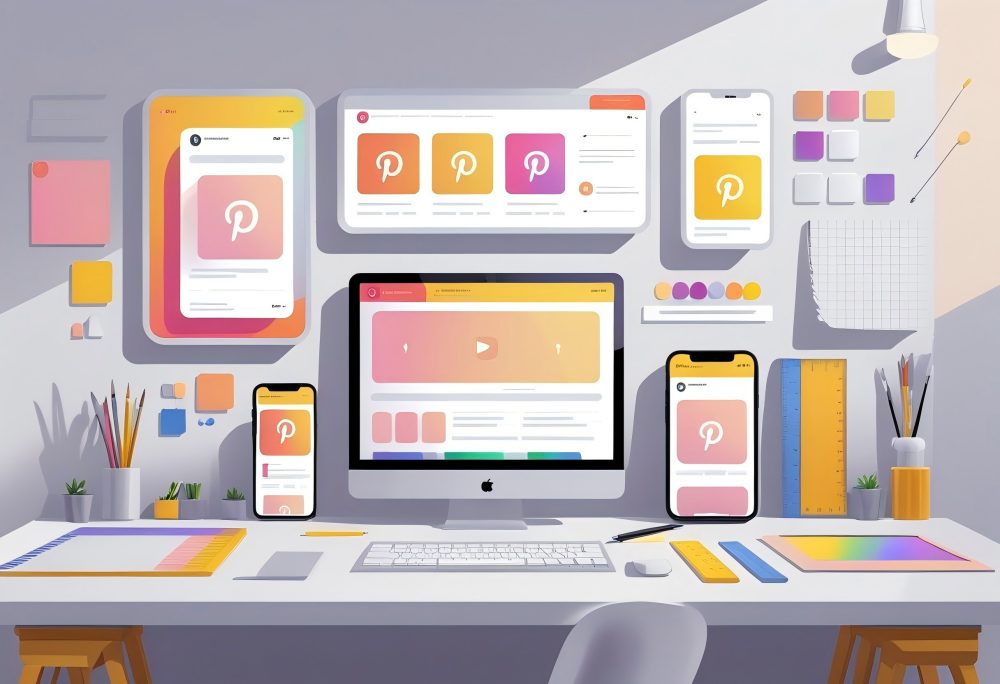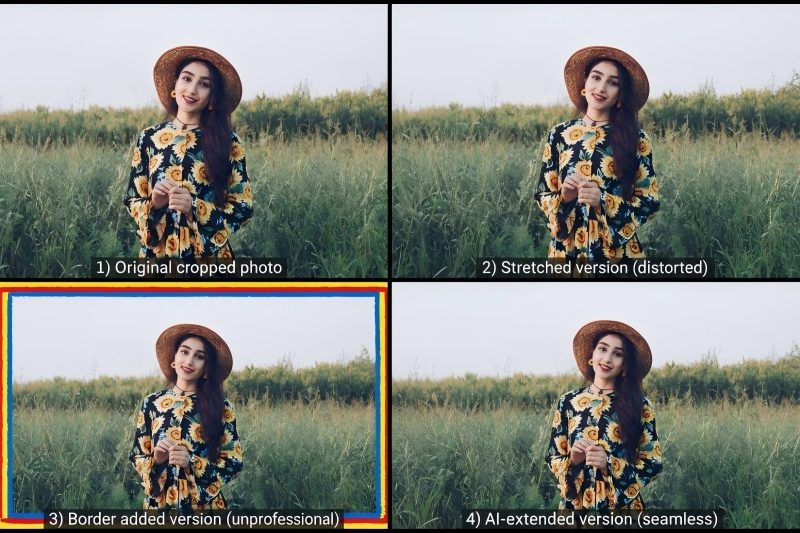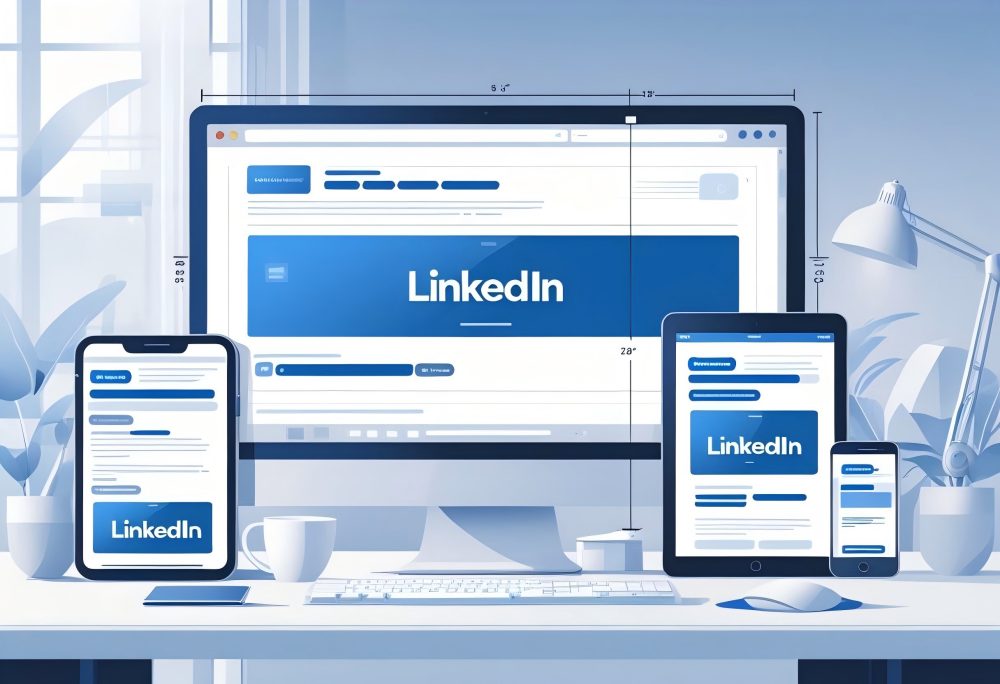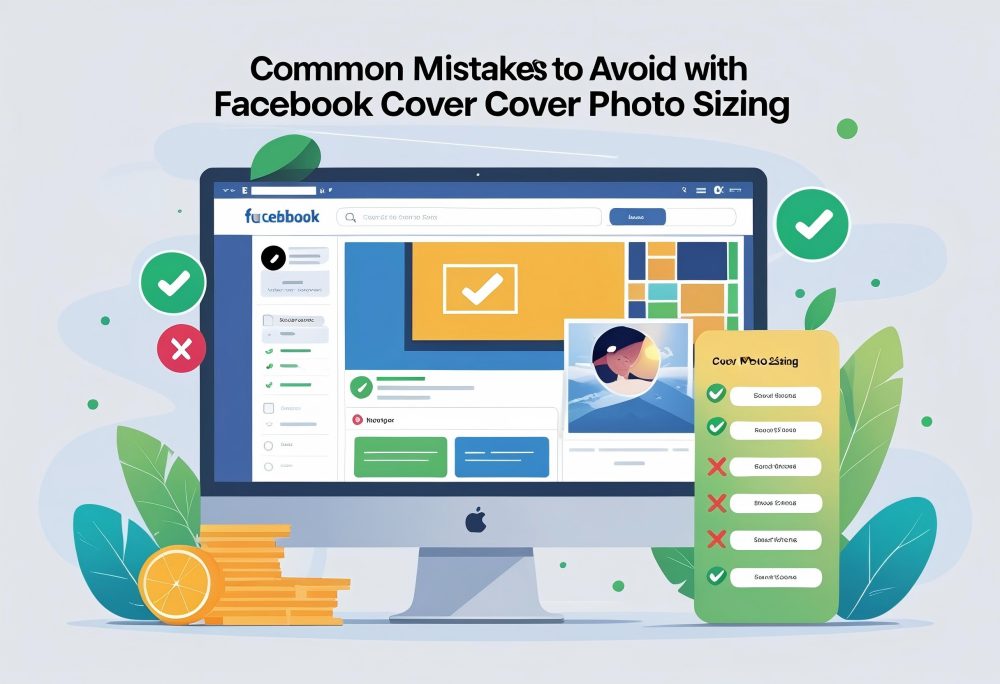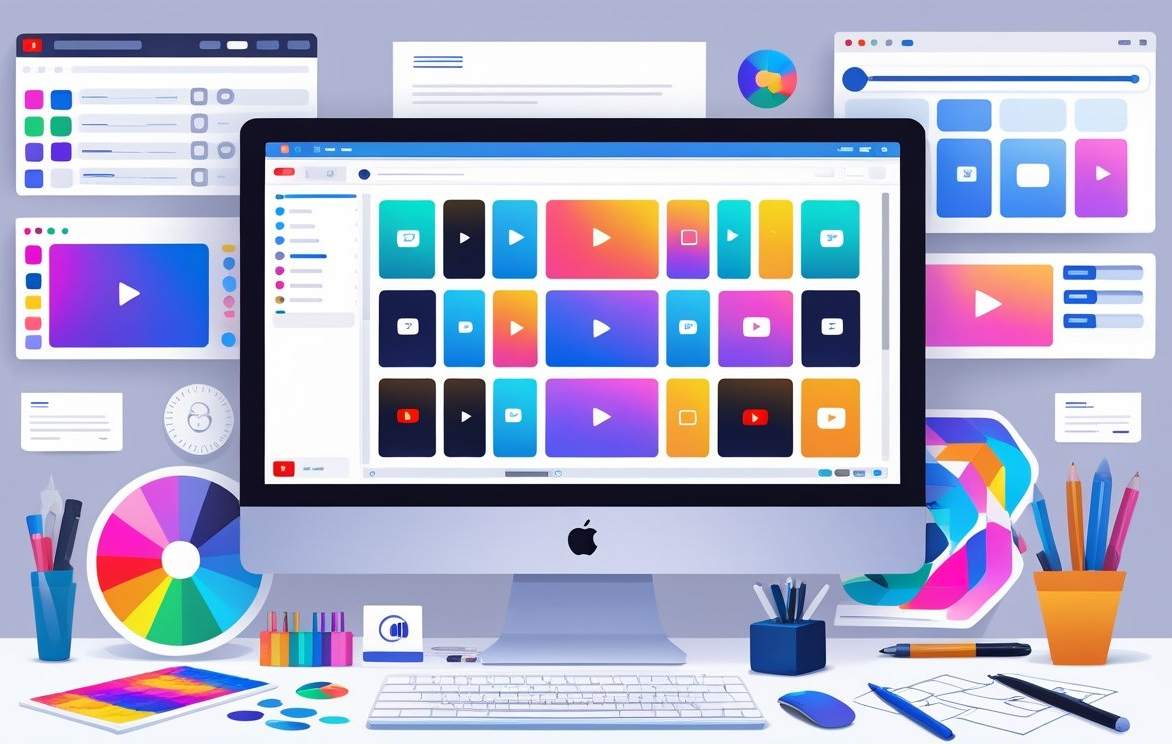Pinterest Image Size Overview
Pinterest relies on visuals to attract attention and drive engagement. Using the right image size helps your Pins display clearly, load quickly, and perform better across devices. For advanced image optimization, consider using our AI image extender to expand your Pinterest images without cropping.
Correct dimensions also ensure your content appears as intended in feeds, search results, and boards.
Why Image Size Matters on Pinterest
Pinterest is an image‑centric social media platform where visuals determine success. When you upload a Pin with the correct dimensions, it displays properly without cropping or distortion.
This keeps your images sharp and easy to view on both desktop and mobile screens. Pinterest’s algorithm favors high‑quality, properly sized images.
Pins that fit the recommended aspect ratio often gain more visibility and engagement. Clear, vertical images stand out in the feed and encourage users to click, save, or share.
Incorrect sizing can cause parts of your image to get cut off or appear blurry. That can reduce your Pin’s effectiveness and hurt your marketing strategy.
Paying attention to image size helps you maintain a professional look and improve how users interact with your content.
Pinterest Image Size Guidelines
Pinterest supports several image formats, including standard, square, and vertical Pins. The ideal Pinterest image size for most content is 1000 x 1500 pixels with a 2:3 aspect ratio.
This size keeps your Pin from being cropped and ensures it looks balanced across devices.
| Pin Type | Recommended Size | Aspect Ratio |
|---|---|---|
| Standard Pin | 1000 x 1500 px | 2:3 |
| Square Pin | 1000 x 1000 px | 1:1 |
| Long Pin | 1000 x 2100 px | 1:2.1 |
| Infographic Pin | 1000 x 3000 px | 1:3 |
| Story Pin | 1080 x 1920 px | 9:16 |
Keep file sizes under 20 MB for images and 100 MB for video Pins. Use .jpg or .png formats for static images.
For video Pins, .mp4 or .mov files work best. Maintaining these specs ensures your Pins load quickly and display correctly.
Recommended Aspect Ratios
Aspect ratio determines how your image appears in the Pinterest feed. The platform recommends a 2:3 ratio because it fits the vertical layout and prevents cropping.
For example, an image that is 1000 pixels wide should be 1500 pixels tall. Longer images, such as 1:2.1 or 1:3, can help showcase infographics or step‑by‑step guides.
Pinterest may truncate these in the feed, so center key text and visuals to keep them visible. Avoid horizontal or square formats unless necessary for a specific design or campaign.
Vertical images perform better because Pinterest’s layout favors portrait‑oriented content.
Standard Pin Dimensions
Pinterest favors vertical images that display clearly in the feed without being cropped. The right dimensions help your content stay sharp, readable, and properly scaled across devices while supporting consistent visual branding.
Optimal Size for Standard Pins
The recommended Pinterest image size for a standard Pin is 1000 x 1500 pixels. This vertical format follows a 2:3 ratio, which fits neatly in the Pinterest feed and maintains full visibility.
Using smaller images, such as 600 x 900 pixels, is acceptable but can reduce clarity on high-resolution screens. High-quality images perform better because they appear crisp when expanded.
Use PNG or JPEG formats, and keep file sizes under 20 MB for faster loading. Avoid blurry or stretched visuals, as they can lower engagement.
When you create Pins, aim for consistent dimensions across posts. Tools like Canva or Tailwind offer customizable templates that automatically apply the correct image size for Pinterest. For batch processing multiple Pinterest images, try our batch image extender to maintain consistency across your entire Pinterest strategy.
Standard Pin Aspect Ratio
Pinterest recommends a 2:3 aspect ratio for all standard Pins. This proportion ensures that your image displays fully in both desktop and mobile feeds without being cut off.
For example, 1000 x 1500 pixels or 600 x 900 pixels both meet the same ratio. If your Pin exceeds this ratio, Pinterest may crop it in the feed.
Overly long Pins (such as 1000 x 2100 pixels) can lose visibility, even though they might look appealing in design tools.
Here’s a quick reference:
| Type | Aspect Ratio | Recommended Size (px) | Display Result |
|---|---|---|---|
| Standard Pin | 2:3 | 1000 x 1500 | Full display |
| Long Pin | 1:2.1 | 1000 x 2100 | May be cropped |
| Square Pin | 1:1 | 1000 x 1000 | Less visibility |
Safe Zones for Pin Design
When designing a Pin, keep key text and logos within the center area of the image. This “safe zone” prevents important details from being cut off when Pinterest crops previews in feeds or mobile views.
Avoid placing titles, call-to-action buttons, or branding near the top or bottom edges. Use clear fonts and high contrast between text and background for readability.
If your Pin includes multiple elements, such as a carousel or collection, maintain consistent spacing and alignment. This helps users quickly recognize your brand and message.
A clean layout with balanced spacing keeps your design accessible and easy to scan.
Square Pins
Square Pins use a balanced 1:1 aspect ratio that fits evenly across devices and layouts. They work best when repurposing content from other social media platforms or when visual consistency is important for your brand.
Square Pin Dimensions
A Square Pin has a 1:1 aspect ratio with an ideal image size of 1000 x 1000 pixels. This means both the width and height are equal, keeping your image centered and proportionate.
Pinterest allows smaller uploads, but staying near 1000 pixels ensures clarity and prevents blurring when scaled. The maximum file size for an image upload is typically 20 MB, so compressing large files without losing quality is important.
Square Pins display well in Pinterest collections and carousel formats, where uniform shapes maintain a clean grid. However, the 2:3 vertical format (1000 x 1500 pixels) still performs better in most feeds because it takes up more screen space.
If you use Square Pins, make sure text and logos are centered to avoid unwanted cropping. Keep your design simple, with bold colors and readable fonts that remain clear on mobile screens.
| Aspect Ratio | Dimensions (px) | Recommended Use |
|---|---|---|
| 1:1 | 1000 x 1000 | Square Pins, Carousels, Board Covers |
Best Uses for Square Pins
You can use Square Pins to share content from Instagram or other platforms that already use square layouts. This saves time when cross-promoting images across multiple social networks. For Instagram content optimization, check out our Instagram post size guide to ensure your images work well across both platforms.
Square Pins are also useful for product photos, logos, or simple graphics where equal spacing enhances visual balance. They work well for Pinterest ads or carousel Pins, where uniformity helps users swipe smoothly through multiple images.
If you manage a Pinterest board cover, the square format keeps your visuals consistent and easy to recognize. It also helps when you want your Pinterest profile to appear polished and organized.
While Square Pins are not the top performer for reach, they are effective for brand consistency and visual curation.
Long Pins
Long Pins use a taller vertical layout that helps your content stand out in Pinterest feeds. They work best when you follow the correct aspect ratio and design with clarity so the full image displays without being cut off.
Long Pin Dimensions
The best Pinterest image size for long Pins is 1000 x 2100 pixels with a 1:2.1 ratio. This vertical format gives enough space to show detailed visuals or step-by-step guides without overwhelming the viewer.
Pinterest crops Pins longer than a 1:2.1 ratio, which can hide key parts of your design. To avoid this, keep text and important visuals centered so they remain visible in the feed.
Use high-quality images in either JPG or PNG format to maintain clarity. A width of 1000 pixels ensures sharpness on both desktop and mobile.
If you upload smaller images, Pinterest may stretch or blur them, reducing engagement.
| Type | Recommended Size | Aspect Ratio |
|---|---|---|
| Long Pin | 1000 x 2100 px | 1:2.1 |
| Standard Pin | 1000 x 1500 px | 2:3 |
When to Use Long Pins
Use long Pins when you want to showcase tutorials, infographics, or vertical images with multiple steps or sections. Their portrait-oriented layout gives users more visual information at a glance, which works well for DIY, recipes, or educational content.
Longer images can increase visibility because they take up more space in the Pinterest feed. However, avoid making them too tall, as excessive height may cause cropping or lower performance in search results.
Designers and marketers often use long Pins to highlight products, blog posts, or brand stories. Keep your layout simple, use readable fonts, and maintain consistent branding to make your Pins more recognizable.
Other Pinterest Pin Formats
Pinterest supports several Pin formats beyond the standard vertical image. Each format has its own dimensions, ratios, and file limits that influence how your content appears in feeds and on boards.
Understanding these details helps you design Pins that stay clear, uncropped, and easy to view across devices.
Idea Pin Size
Idea Pins, sometimes called Story Pins, fill the full mobile screen in a 9:16 aspect ratio. The best image size is 1080 x 1920 pixels, which matches the format used on other social media platforms.
Pinterest allows both static images and short videos within this layout. Keep your file sizes under 20 MB for images and 100 MB for videos.
Videos can run 1–60 seconds long. Because most viewers scroll with sound off, add on-screen text or captions.
Use vertical images with centered text and clear visuals. Avoid borders or horizontal layouts since they can appear cropped.
Idea Pins work well for step-by-step tutorials, product demos, or quick tips that encourage engagement directly on Pinterest without linking off-site.
Carousel Pin Dimensions
Carousel Pins let you include multiple images or videos in one post. Each card can use either a 2:3 ratio (1000 x 1500 pixels) or a 1:1 square ratio (1000 x 1000 pixels).
The first card usually performs best in the 2:3 format because it fits Pinterest’s feed design. You can upload 2 to 5 cards per carousel.
Keep all images consistent in style and lighting for a clean look. If you’re highlighting products, use each card to showcase a different feature or variation.
Pinterest automatically crops non-square images to the center, so check your layout before uploading. Carousel Pins help you tell a visual story or promote a small collection of related items without overwhelming the viewer.
Infographic Pin Specifications
Infographic Pins use a 1:3 aspect ratio with an ideal image size of 1000 x 3000 pixels. These long vertical images can display detailed information in a single view.
However, Pinterest may crop longer images in the feed, showing only part of the content until users click. Keep your design simple, using clear sections, short text, and readable fonts.
Center key information near the middle so it remains visible even in previews. Infographics are useful for educational content, data summaries, or process overviews.
While Pinterest’s algorithm prefers the 2:3 ratio, well-designed infographics can still perform well if they’re visually balanced and easy to scan.
Profile and Board Image Sizes
Pinterest uses several types of images beyond Pins, including your profile photo, board covers, and profile cover image. Each one has its own ideal dimensions and format to keep your Pinterest profile looking professional and consistent across devices.
Accurate sizing helps your images appear sharp and avoids unwanted cropping.
Profile Photo Requirements
Your Pinterest profile photo represents your brand or personality across the platform. It appears next to your username, comments, and Pins, so clarity matters.
The recommended image size is 280 × 280 pixels, displayed as a circular image. Upload a high-quality PNG or JPG file with a simple background and centered subject.
Avoid text or fine details near the edges since Pinterest crops the image into a circle. If you manage a business account, use your logo for easy brand recognition.
For personal accounts, choose a clear portrait with good lighting. Keep the file under 10 MB for faster loading.
Pinterest automatically scales your profile photo for different screens. Starting with a crisp, high-resolution image ensures it stays sharp even when resized.
Board Cover Dimensions
Each Pinterest board cover helps organize and visually define your collections. A consistent board cover image makes your entire profile look cohesive.
The ideal dimension is 600 × 600 pixels with a 1:1 ratio. Upload square, high-quality images that reflect the board’s theme.
For example, a food board might feature a close-up of a dish, while a design board could show a clean layout or pattern. Pinterest displays board covers differently on mobile and desktop, so preview them before finalizing.
Using the same style or color palette across all board covers improves your profile’s overall look and makes navigation easier for users. Keep text minimal and large enough to stay legible after scaling.
If you use templates, maintain the same width and ratio for consistent alignment.
Profile Cover Image Size
The profile cover image sits at the top of your Pinterest profile and acts as a header. It’s your chance to showcase your brand identity, highlight seasonal themes, or feature featured Pins.
Pinterest allows static or dynamic displays here. For a static image, use 1600 × 900 pixels in a 16:9 ratio.
This horizontal format fits most screens without distortion. Choose an image that aligns with your brand tone—clean, high-quality, and uncluttered.
Avoid overlaid text that might get cropped on smaller displays. If you prefer a dynamic layout, Pinterest may automatically display your latest or most popular Pins.
To maintain control, upload a custom cover image that matches your marketing strategy and complements your collection of boards. Keep your design simple, with balanced colors and clear focus points, to make your Pinterest profile visually appealing and easy to recognize.
Pinterest Image Best Practices
Strong Pinterest performance depends on clear visuals, readable text, and consistent branding. Paying attention to image quality, layout, and message helps your Pins stand out in feeds and search results.
Using High-Quality Images
Pinterest is an image-centric social media platform, so every Pin must look sharp. Use high-resolution images with at least 1000 x 1500 pixels for a clear display across devices.
Blurry or pixelated photos reduce engagement and make your content appear unprofessional. Choose vertical images with a 2:3 ratio since Pinterest favors portrait-oriented Pins.
This format fills more screen space and improves visibility in the feed. Save images in .jpg or .png format to maintain color accuracy.
Avoid heavy filters or over-editing. Natural lighting and balanced contrast make your visuals more appealing.
When you upload, double-check that your image isn’t cropped awkwardly. A clean, centered layout ensures users can see your full design without losing key details.
Adding Text Overlays
Text overlays help users understand your message quickly. Use short, descriptive phrases that highlight the main benefit or idea.
Keep fonts readable and large enough to stand out on mobile screens. Stick to 2–3 font styles at most.
Bold or sans-serif fonts often work best for clarity. Contrast text color with the background for easy reading—dark text on a light image or vice versa.
Add your brand name or website subtly within the design. This helps users remember your source when they save or share your Pin.
Avoid cluttering the image. Leave space around the text so it doesn’t compete with visuals.
Center-aligned or top-third placements often perform well on Pinterest.
Branding for Pins
Consistent branding builds trust and recognition. Use your logo, color palette, and font style across all Pins.
This creates a unified look that aligns with your Pinterest profile and other social media accounts. Add your logo in a corner where it doesn’t block key content.
Keep it visible but not distracting. Use the same tone and layout style for each Pin to strengthen your identity.
When creating carousel or collection Pins, maintain a consistent design across all slides. If you use templates or design tools, choose customizable templates that match your marketing strategy and visual identity.
Common Mistakes to Avoid
Avoid using horizontal or square images unless necessary. Pinterest’s algorithm favors vertical images with the correct aspect ratio.
Wider images often appear smaller and attract less attention. Don’t overload your Pin with text or graphics.
Too many elements make it hard to read and reduce engagement. Keep your layout simple and focused on one message or product.
Be careful with long Pins. While long pins can be eye-catching, those beyond a 1:2.1 ratio may get cropped in the feed.
Keep vital information near the center to prevent important details from being cut off. Check your spelling, links, and file size before posting.
A broken link or low-quality upload can hurt your credibility and limit your reach on Pinterest.
Frequently Asked Questions
Pinterest uses specific image dimensions and ratios to keep your Pins clear and consistent across the platform. Correct sizing improves visibility, prevents cropping, and helps your content look professional on both desktop and mobile devices.
What are the current pixel dimensions for Pinterest pin images?
The ideal Pinterest Pin size is 1000 x 1500 pixels. This dimension follows a 2:3 aspect ratio, which Pinterest recommends for best performance.
You can also use 1000 x 2100 pixels for long Pins or 1000 x 1000 pixels for square Pins, though the 2:3 ratio remains the most reliable option for engagement and display.
What is the optimal image ratio for Pinterest posts?
Pinterest favors a 2:3 ratio for both standard and promoted Pins. This ratio fits well within the feed and avoids unwanted cropping.
Ratios taller than 1:2.1 may get cut off, while shorter or horizontal images tend to appear smaller and attract less attention.
How large should a Pinterest cover photo be in pixels?
A Pinterest board cover photo should measure about 600 x 600 pixels and maintain a 1:1 ratio. You can upload larger images for sharper resolution since Pinterest scales them down to fit different screens.
A clear, centered design works best for showcasing your board theme.
What dimensions should a Pinterest profile picture adhere to?
Your Pinterest profile photo should be 160 x 160 pixels. This square format ensures your image stays crisp and recognizable across the social network.
Using a simple logo or headshot with clear contrast helps your profile stand out in search results and follower feeds.
Which image format yields the best quality on Pinterest?
Pinterest supports .PNG and .JPG formats. Use .PNG when you want sharper lines or transparent backgrounds, and .JPG for photographs or detailed images with many colors.
Both formats keep file sizes small enough for quick loading while maintaining quality after upload.
What are the recommended dimensions for Pinterest images in inches?
If you work with print-based design software, the 1000 x 1500 pixels size equals about 3.33 x 5 inches at 300 DPI.
This conversion helps you plan layouts or templates for consistent scaling across platforms.

